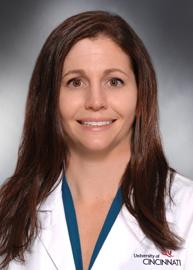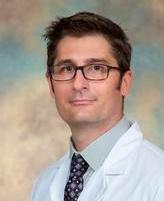Saving Lives by Connecting the Dots
Patients who need an organ transplant and struggle with alcohol use disorder (AUD) often face a difficult road. Time isn’t on their side. Until recently, they had to navigate separate systems—addiction care in one place, transplant evaluation in another. That delay cost some patients the chance to get on the transplant list in time. Now, a new program available at UC Health is changing that story.
Launched in February 2025, Integrated Transplant and Alcohol Recovery Services integrates addiction treatment directly into the transplant process. It’s the result of deep collaboration between Addiction and Transplant Services, spearheaded by Dr. Megan Rock, Danielle Keller, MA, LSW, Dr. Dan Bebo and the transplant leadership team. This multidisciplinary program makes sure people are seen, supported, and treated when they need it most.
Why UC Health Offers this Service
Patients have come to Cincinnati from across the country for this program—West Virginia, Arizona, North Carolina. Many are at the edge of organ failure. Some don’t fully realize how alcohol use has impacted their health until they’re evaluated for transplant.
Before the embedded model, patients often faced long wait times to connect with addiction support. That gap delayed not only their eligibility for transplant but also their chances at long-term recovery.
With the new in-house approach, patients can begin treatment for AUD the same day they’re evaluated for transplant.
Two main entry points:
- Emergency admission to the hospital for transplant evaluation
- Outpatient referral for early intervention
From the moment they’re identified, Keller steps in to assess readiness, begin treatment, and support the emotional and social stability needed to move forward.
Liver Transplant for Patients with AUD
For patients with AUD, the liver is often the first organ to suffer lasting damage. The liver filters toxins from the body, helps digest food, and plays a central role in keeping the body balanced. Over time, excessive alcohol use can cause the liver to scar—this condition is known as cirrhosis. In many cases, the damage becomes so advanced that a liver transplant is the only life-saving option.
When the liver starts to fail, it can put stress on other organs, sometimes causing them to struggle too. Patients may develop problems with their kidneys, heart, or brain function, a chain reaction called multi-organ failure. This cascade makes the window for treatment even smaller.
In these moments, every hour counts. That’s why the embedded model matters. By starting alcohol use disorder treatment immediately, we can begin stabilizing patients faster. That early support doesn’t just make transplant more likely. It may help stop the domino effect that leads to broader organ failure.
Treating the Whole Patient—Before and After Surgery
The program doesn’t stop once a patient is listed for transplant. And it doesn’t end after the surgery, either.
Patients receive ongoing addiction treatment and mental health care after transplant, helping them cope with stress, reduce relapse risk, and build sustainable routines for recovery. This consistent care on both sides of surgery is rare and powerful.


